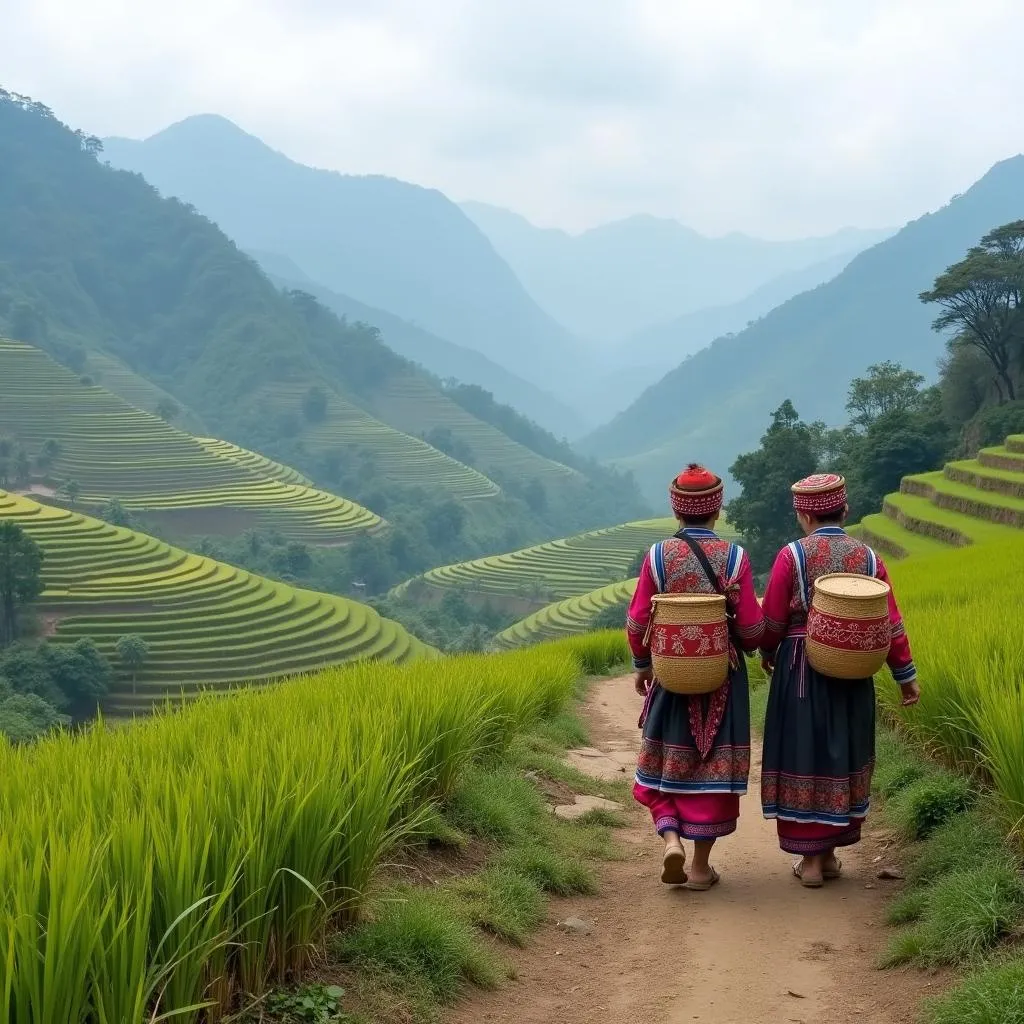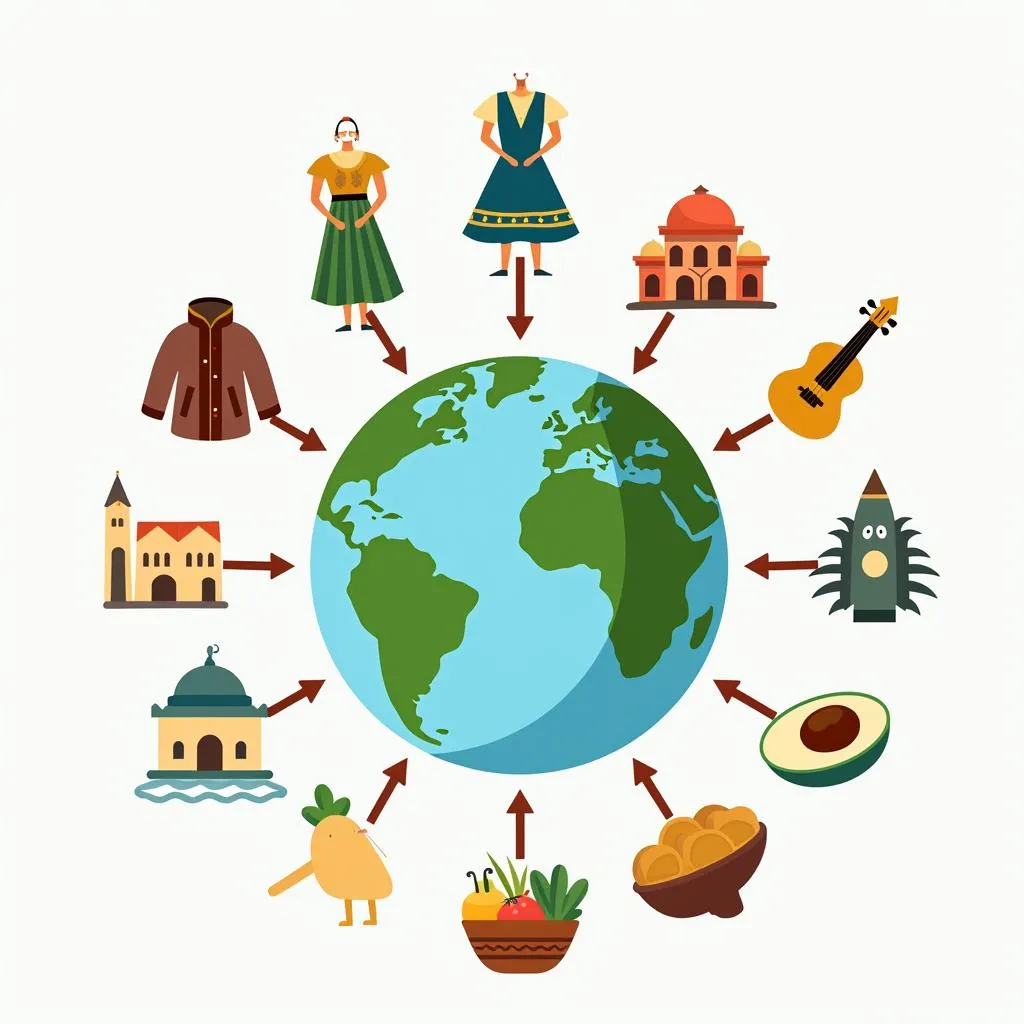For IELTS test-takers, being able to eloquently describe a place of cultural diversity in your country is a valuable skill. This topic not only tests your language proficiency but also your cultural awareness and ability to articulate complex experiences. Let’s explore how to effectively tackle this topic in your IELTS Speaking exam.
Part 1: Introduction and Interview
In this section, the examiner may ask general questions about cultural diversity and your experiences. Here are some potential questions:
- Do you enjoy learning about different cultures?
- Have you ever experienced culture shock?
- How diverse is the area where you live?
Let’s look at a sample answer for the first question:
Examiner: Do you enjoy learning about different cultures?
Candidate: Absolutely! I find it fascinating to explore diverse cultures. It’s like opening a window to new worlds, each with its unique traditions, cuisines, and ways of life. I believe understanding different cultures broadens our perspectives and helps us become more empathetic global citizens. Recently, I’ve been particularly interested in learning about indigenous cultures and their profound connection to nature.
Part 2: Long Turn
Now, let’s move on to the main topic. Here’s a sample cue card:
Describe A Place In Your Country Where You Experienced A Different Culture. You should say:
- Where it is
- When you went there
- What you saw and did there
- And explain how this experience impacted you
Here’s a sample answer aimed at Band 8-9:
“I’d like to talk about my visit to Sapa, a picturesque mountain town in northern Vietnam, where I had a profound cultural encounter with the Hmong people. I traveled there last winter with a group of friends, seeking to immerse ourselves in the local ethnic minority culture.
Sapa is renowned for its breathtaking terraced rice fields and the vibrant traditional lifestyles of its ethnic minorities. Upon arrival, we were immediately struck by the kaleidoscope of colors from the traditional attire worn by the Hmong women – intricate indigo-dyed hemp cloth adorned with vibrant embroidery.
During our stay, we had the privilege of participating in a homestay with a Hmong family. This experience was truly eye-opening. We helped prepare traditional dishes using local ingredients, learned about their unique agricultural practices, and even tried our hand at their intricate brocade weaving.
One of the most memorable aspects of our visit was joining in a traditional ‘love market’ – a colorful festival where young Hmong people gather to find potential partners through song and dance. The haunting melodies of their folk songs and the graceful movements of their dances were utterly captivating.
This experience had a profound impact on me. It broadened my cultural horizons and gave me a deep appreciation for the rich tapestry of ethnic diversity within my own country. It made me realize how much we can learn from traditional cultures about sustainability, community, and maintaining a harmonious relationship with nature.
Moreover, it challenged my preconceptions about rural life and ethnic minorities. I was amazed by how the Hmong people have managed to preserve their unique cultural identity while adapting to modern challenges. This experience has inspired me to explore more of my country’s cultural diversity and to advocate for the preservation of these invaluable cultural heritages.”
 Sapa Hmong Cultural Experience
Sapa Hmong Cultural Experience
Follow-up Questions
Examiner: How did this experience change your perspective on your own culture?
Candidate: This experience was truly eye-opening and led me to reflect deeply on my own cultural background. Witnessing the Hmong people’s strong sense of community and their profound connection to their traditions made me realize that in our fast-paced urban life, we often lose touch with our cultural roots. It inspired me to delve deeper into my own heritage and appreciate the unique aspects of my culture that I had previously taken for granted. Moreover, it highlighted the importance of cultural preservation in the face of rapid modernization, prompting me to become more active in promoting and protecting cultural diversity in my own community.
Part 3: Two-way Discussion
Examiner: How do you think globalization affects cultural diversity?
Candidate (Band 8-9 response): Globalization has a multifaceted impact on cultural diversity. On one hand, it facilitates cultural exchange on an unprecedented scale, allowing people to experience and appreciate diverse cultures from around the world. This cross-pollination of ideas can lead to exciting cultural innovations and foster greater global understanding.
However, there’s also a concern that globalization may lead to cultural homogenization. The pervasive influence of dominant cultures, particularly Western culture, through media and commerce, can overshadow local traditions and practices. This could potentially result in the erosion of unique cultural identities, especially for smaller or indigenous communities.
That being said, I believe many cultures are finding ways to adapt and thrive in the global context. We’re seeing a resurgence of interest in local traditions and heritage as people seek to maintain their cultural roots while engaging with the global community. The key lies in striking a balance – embracing global connections while consciously preserving and celebrating cultural diversity.
Ultimately, I think globalization presents both challenges and opportunities for cultural diversity. It’s up to us to harness its positive aspects while being mindful of preserving the rich tapestry of world cultures.
 Cultural Diversity in Globalization
Cultural Diversity in Globalization
Key Vocabulary and Phrases for High Scores
Cultural tapestry /ˈkʌltʃərəl ˈtæpɪstri/ (noun phrase): A metaphorical term describing the rich and varied aspects of culture.
Example: “The festival was a vibrant display of the region’s cultural tapestry.”Immerse /ɪˈmɜːrs/ (verb): To involve oneself deeply in a particular activity or interest.
Example: “We decided to immerse ourselves in the local culture by staying with a host family.”Profound impact /prəˈfaʊnd ˈɪmpækt/ (noun phrase): A deep and significant effect.
Example: “The experience had a profound impact on my understanding of indigenous cultures.”Broaden one’s horizons /ˈbrɔːdn wʌnz həˈraɪznz/ (idiom): To expand one’s range of interests, experiences, and knowledge.
Example: “Traveling to different regions has really broadened my cultural horizons.”Cultural preservation /ˈkʌltʃərəl ˌprezəˈveɪʃn/ (noun phrase): The protection and conservation of cultural heritage and traditions.
Example: “Many communities are focusing on cultural preservation in the face of rapid modernization.”
Describe a place in your country known for its street food can be another interesting topic to explore in IELTS Speaking, as it often intersects with cultural diversity.
Examiner’s Advice
To score high in the IELTS Speaking test when discussing cultural experiences:
- Use a wide range of vocabulary related to culture, traditions, and diversity.
- Provide specific examples and personal anecdotes to illustrate your points.
- Show critical thinking by discussing both positive and negative aspects of cultural experiences.
- Use advanced grammatical structures and idiomatic expressions naturally.
- Maintain fluency while organizing your thoughts coherently.
- Demonstrate cultural awareness and sensitivity in your responses.
Remember, practice is key. Try to describe a place where you go to enjoy traditional music or other cultural activities to further enhance your speaking skills on this topic.
By following these guidelines and incorporating rich vocabulary and thoughtful analysis, you’ll be well-prepared to discuss cultural diversity in your IELTS Speaking test. Good luck!

